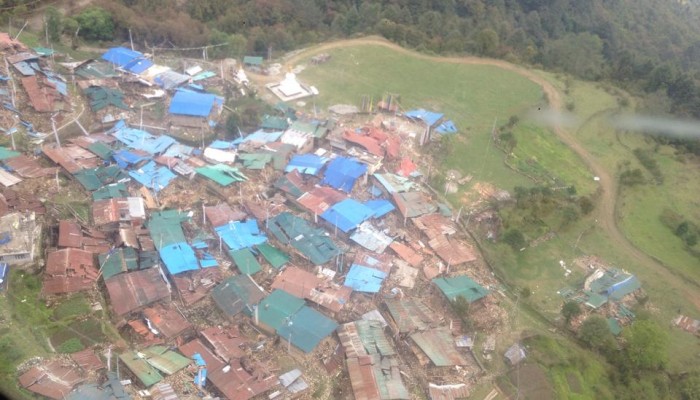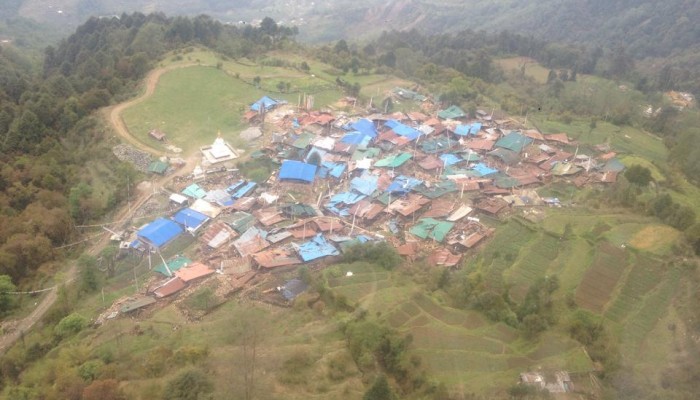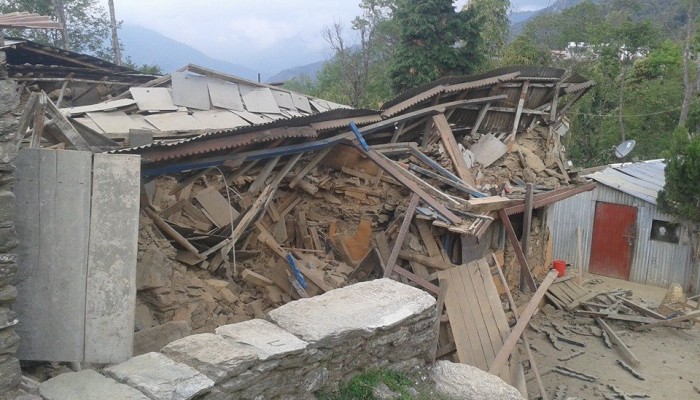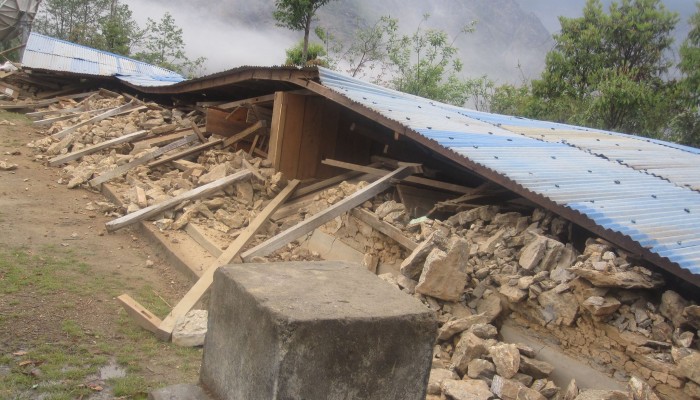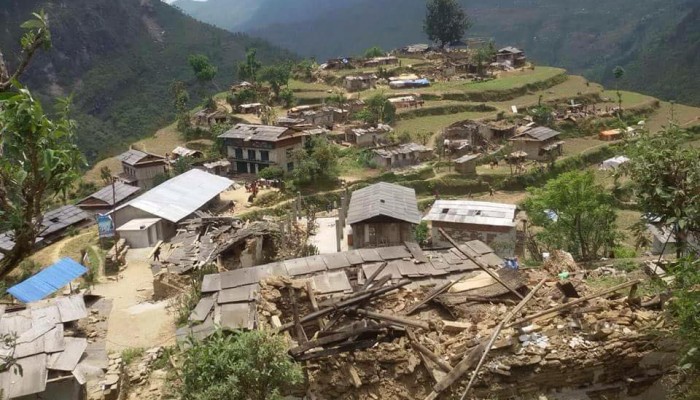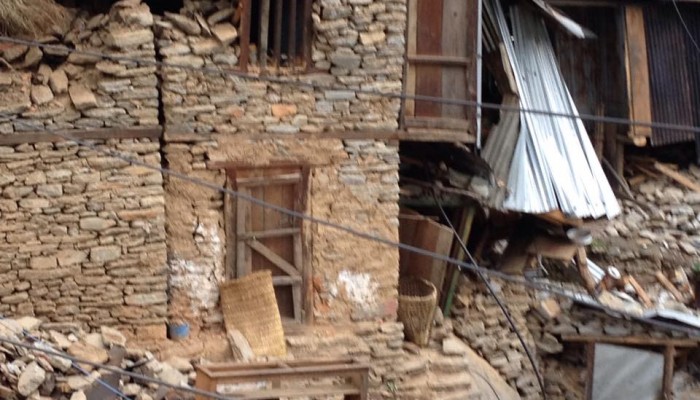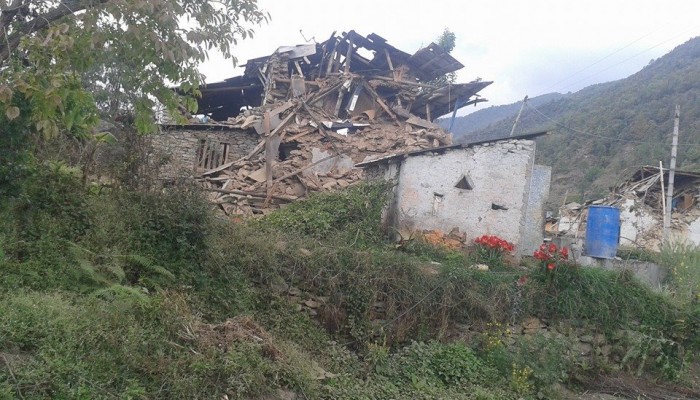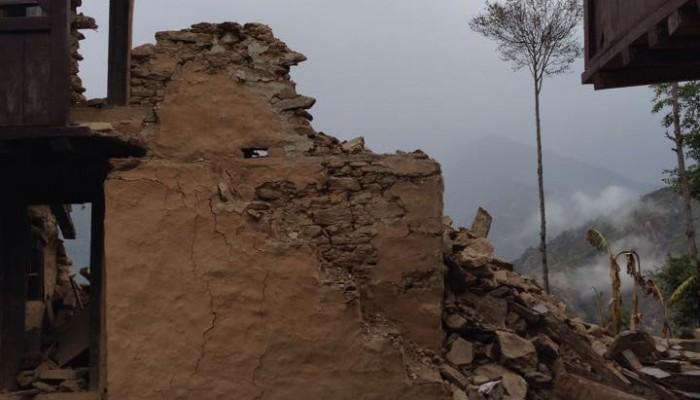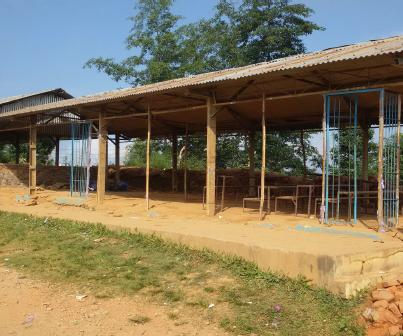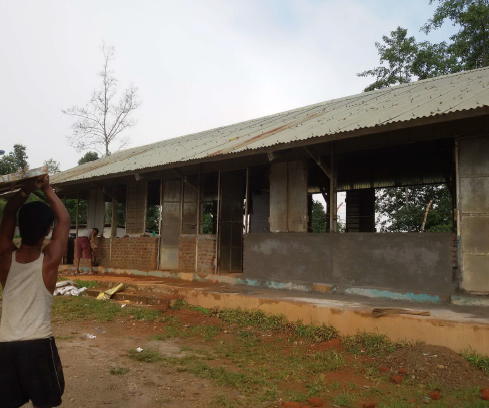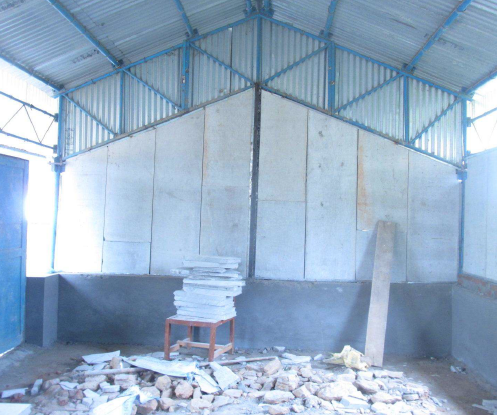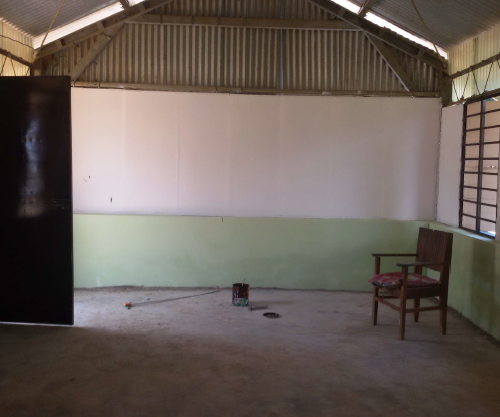Patron: Rajan Khatiwoda
The regions of Baruwa, Sindhupalchok and Lamidanda and Lapilang of Dolakha have been heavily affected by the earthquake as elsewhere. Although they are not very far from the Capital, Kathmandu, (100-200 kms) presence of the Government is not as strong as it should have been. Especially Sindhupalcho and Dolakha have been hit twice thus, damage is also considerably heavy in these regions. More than 90% of houses have been collapsed destroying all necessary household utilities kept inside the homes and killing hundreds of people as well as cattle etc. Therefore, we want to provide immediate reliefs and long term support to the victims. The donation will be reached directly to the victims coordinating with other communal organizations who are dedicated to support them as volunteers. The donation will not be spent for any other purpose (such as, administration etc.) I myself am going to Nepal on Monday to start very transparent and fair distribution of the aids. Thanking you for your kind support!
Ariel photographs of Sindhupalchok after the earthquake. Devastated Dolakha after the earthquake. (For an update, see ‚report‘)Update: Restoration of public school in Sindhupalchowk
Project overview:
The recent devastating earthquakes and aftershocks have had an adverse effect in the education system of Nepal. Large number of schools (roughly 5000), colleges and other educational institutes were destroyed by the calamity. This project aims at making tangible effort in order to restore the lives of the children who were deprived of education after the earthquake wrecked their classrooms. As an initiation, a block of a school situated in Sindupalchowk, one of the most affected districts, was restored.
Background:
The restoration work was done at Shree Rajeshowri Higher Secondary School. Situated at the hill top of Sipapokhare, Sindhupalchowk 7, this school enrolls six hundred students from kindergarten to grade ten.Among the 10 blocks which included classrooms, laboratories and a library, 6 of the blocks were completely destroyed and 3 were partially damaged by the earthquake. Also, the library and computer labs were completely devastated. The students are having a very difficult time adjusting in the wall less classrooms. “Having two sections of our class of 70 students adjusted in a single classroom has been troublesome in every way.”, said Niraj Spkota, a tenth grader of the school. Even though the school management has been able to run the regular classes, the adverse condition of the classrooms and other buildings has affected the classes and the mental state of the students.
Discussion:
After the tremors were less frequent, four volunteers visited the school to assess the situation and determine what could be done. We found that the school had blocks that contained two classrooms each most of which were destroyed beyond repair. However, some had usable truss and roofs. After inspection and rough estimation, we proposed the restoration of one such block. Once the fund was received, we went to the school and started working on the construction of the block. We started off with the flooring. Construction materials were bought from local sellers and few labors were employed to carry out the work. With help from the labors, we worked for four days to complete the floor raise a three feet wall around the block that had just the frames on it. Available bricks and stones were used to lay the wall. The available doors and windows that were usable were installed. We also had the opportunity to interact with the students when we took few of their classes. The rest of the walls were made of pre-fabricated cement slabs. The slabs were purchased and transported from the capital. After five days of working, we left due to festive season. There was a break of four days since we left. The rest of the work was done by the pre-fab technicians. Once the construction was complete, two of us went to the school for the third time and inspected the work. We handed the block over to the school principal which marked the end of the first phase of the project.
Further works:
The successful completion of the first phase of the school restoration project has served as a great initiation to help the students get back to safe classrooms. This has also encouraged the interested volunteers to keep working on such projects. Such works target a larger community and help the education system. Thus, a school in Dolakha district is chosen for the next phase. Similar restoration will be done to rebuild two classrooms of the school. The current shortage of fuel and resources has put a pause to our work. As soon as the situation gets better, the works will be resumed. As the coordinator of the project here in Nepal, I would like to thank the volunteers Ankur Regmi, Anuj Acharya, Apar Parajuli and Prabin Sapkota who went to Sindupalchowk and worked to restore the school block amidst the tremors and doubts of safety. Also, the project couldn’t be completed without the unconditional cooperation of Mr. Sharada Prasad Sapkota, principal of Shree Rajeshwori HSS.
Biraj Khanal: Construction of temporary houses and restoration of a public school in Sindupalchowk. Contact: kahnbiraj@gmail.com
————————————————————————————————————————-
Update 09/216
SAI Help Nepal: Restoration of Public School in Dolakha Restoration of public school in Dolakha
Project overview
This project was the second phase of the school restoration project started after the earthquakes in April and May 2015. After a successful work at Sindupalchowk, the focus was shifted towards Dolakha which is one of the most affected districts. As in Sindupalchowk, the students were not able to attend their classes after the earthquake. This phase aimed at restoring a two classroom block of an earthquake wrecked school. The long shortage of fuel and construction materials halted the project for almost six months. However, it was worked out well once everything became normal.
School information
The restoration work was done at Kalidevi Ni.Ma.Vi. (Primary school). The school is situated at Mirgetar 4 which is one of the remote areas of Dolakha. 150 students are currently studying at the school from kindergarten to grade eight. Running on very low resources, the school had few blocks and classrooms where the students adjusted to conduct classes. The earthquake caused partial damage to all the blocks and one on the blocks was completely destroyed. The students were studying in tents and temporary classrooms made of bamboo strips. Even though the school management tried hard to manage the classes, the poor condition of classrooms impeded the regular classes. No efforts had been made by the government to restore the school. Being in a remote area was the major cause for nothing being done.
Work details
As soon as the team of volunteers came back from Sindupalchowk, a smaller team left for Dolakha to visit the school and assess the situation. During the visit, it was decided that a two-classroom block will be built with the help from school administration. The team of volunteers worked in coordination with the school authority to complete this project. Two classrooms of total floor area 14.6 m X 5 were built. The classrooms were made of steel posts, truss and concrete. The fund was utilized to buy the construction materials (Mild Steel pipes, sand, cement and bricks) and pay for the labor. The plinth work was also done with the fund.
Overall project budget:
The total fund receive by the coordinator was NRS 550,000. Out of this budget, two projects (one in Sindupalchowk and the other in Dolakha) were successfully completed. The remaining fund (NRS 17,100) will be used in the next project (Construction of two classrooms in Busti Primary School, Dolakha).
Further works
The successful completion of the first phase of the school restoration project has helped the students get back to safe classrooms. The classrooms were for ninth and tenth standards. It will surely be of much value to the students and to the school itself. The school management has prepared a note of thanks for SAI Help Nepal which they are eager to handover.
Conclusion
As the coordinator of the project here in Nepal, I would like to thank Mr Badri Prassad Dahal who made communication with the school possible. The success of the project depended on the cooperation from the school management. So I would like to thank Mr. Ramji Ghimire, prinicipal of Kalidevi Ni.Ma.Vi for being understanding of our situation and working with us to complete the project. As a continuation of the project, we still have a major project (Construction of two classrooms in Busti Primary school) to work on. Since I myself am busy at the university, the project will be carried out in the month of August. I have collected a good number of volunteers who are willing to help with installation of the AV room and training the teachers during our vacation. I expect the project to be as successful as the previous ones. The projects couldn’t have been initiated without the efforts from patron SAI Help Nepal. I would like to thank entire members of the SAI Help Nepal team for their immense guidance and support throughout the project.
Biraj Khanal
Coordinator-Restoration of a public school in Dolakha
Email: kahnbiraj@gmail.com +9779851183720
Further information in the Detailed report
